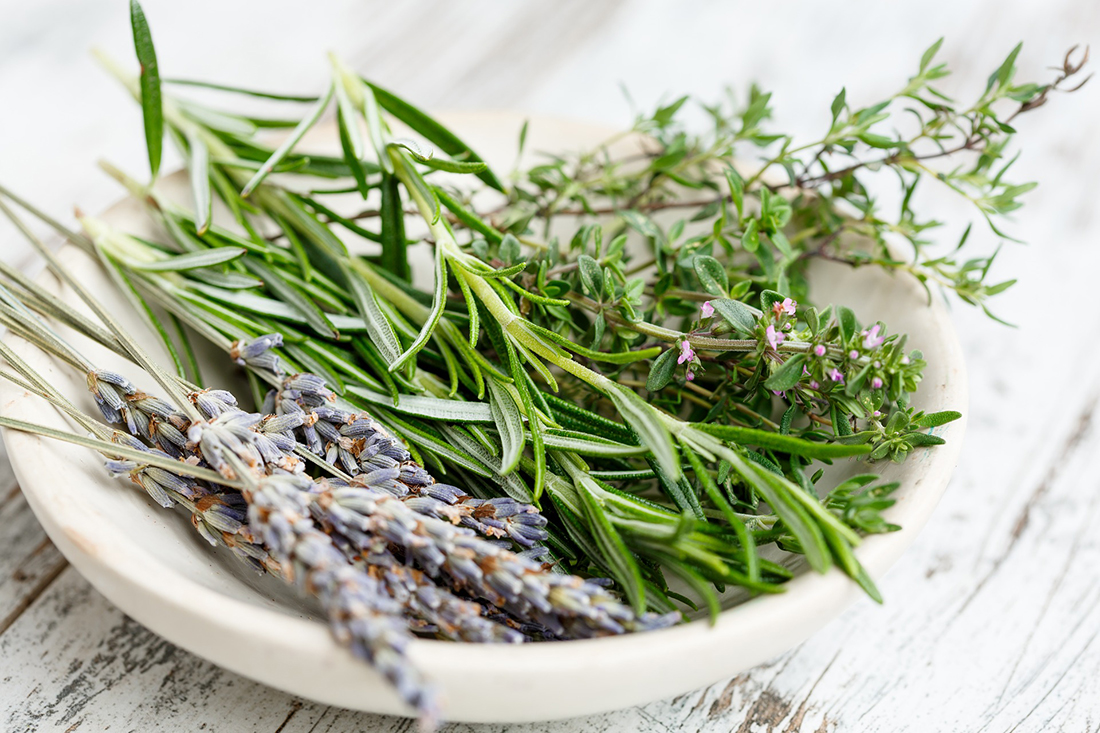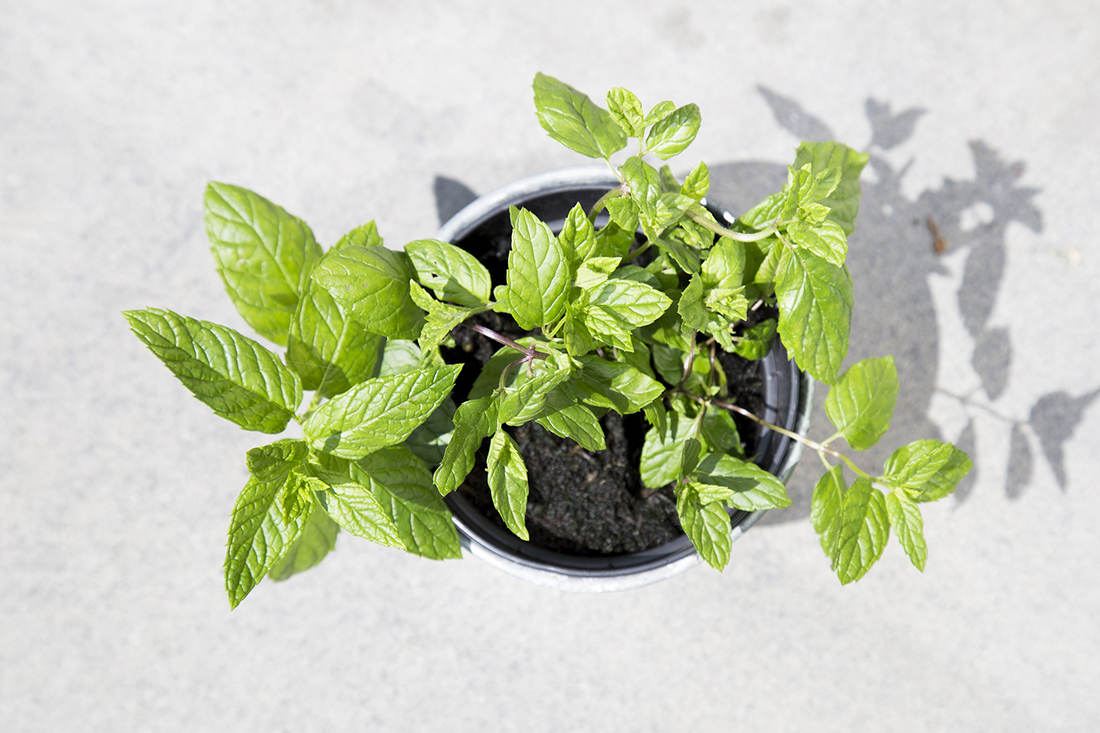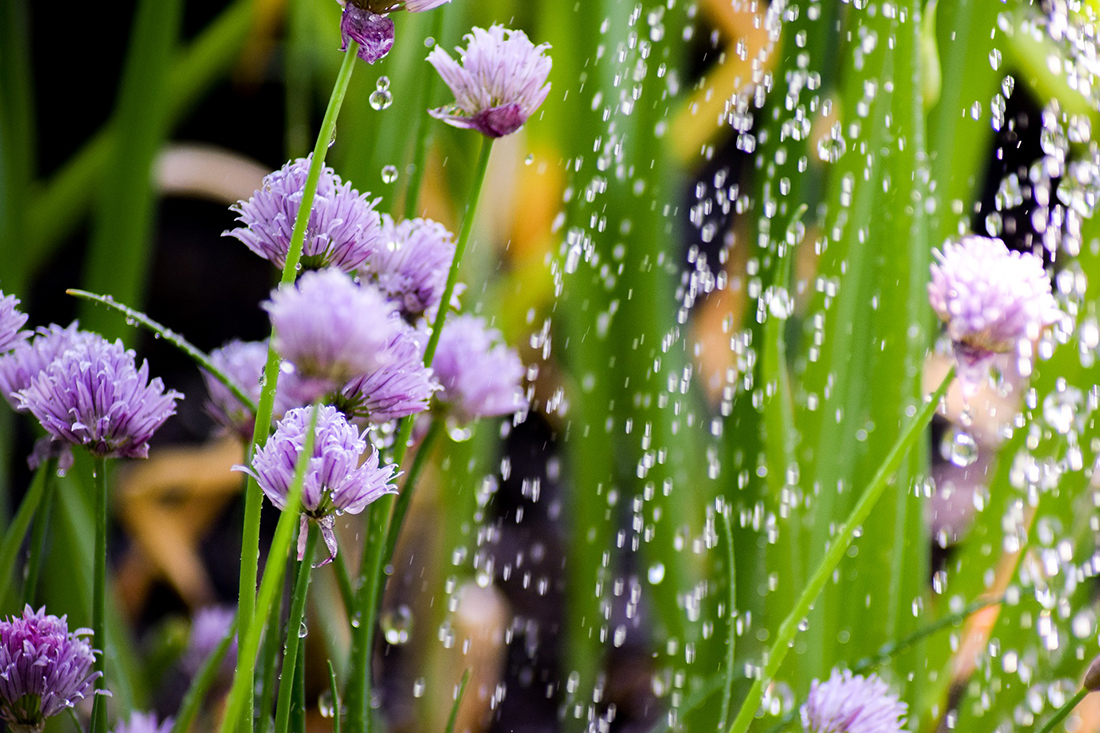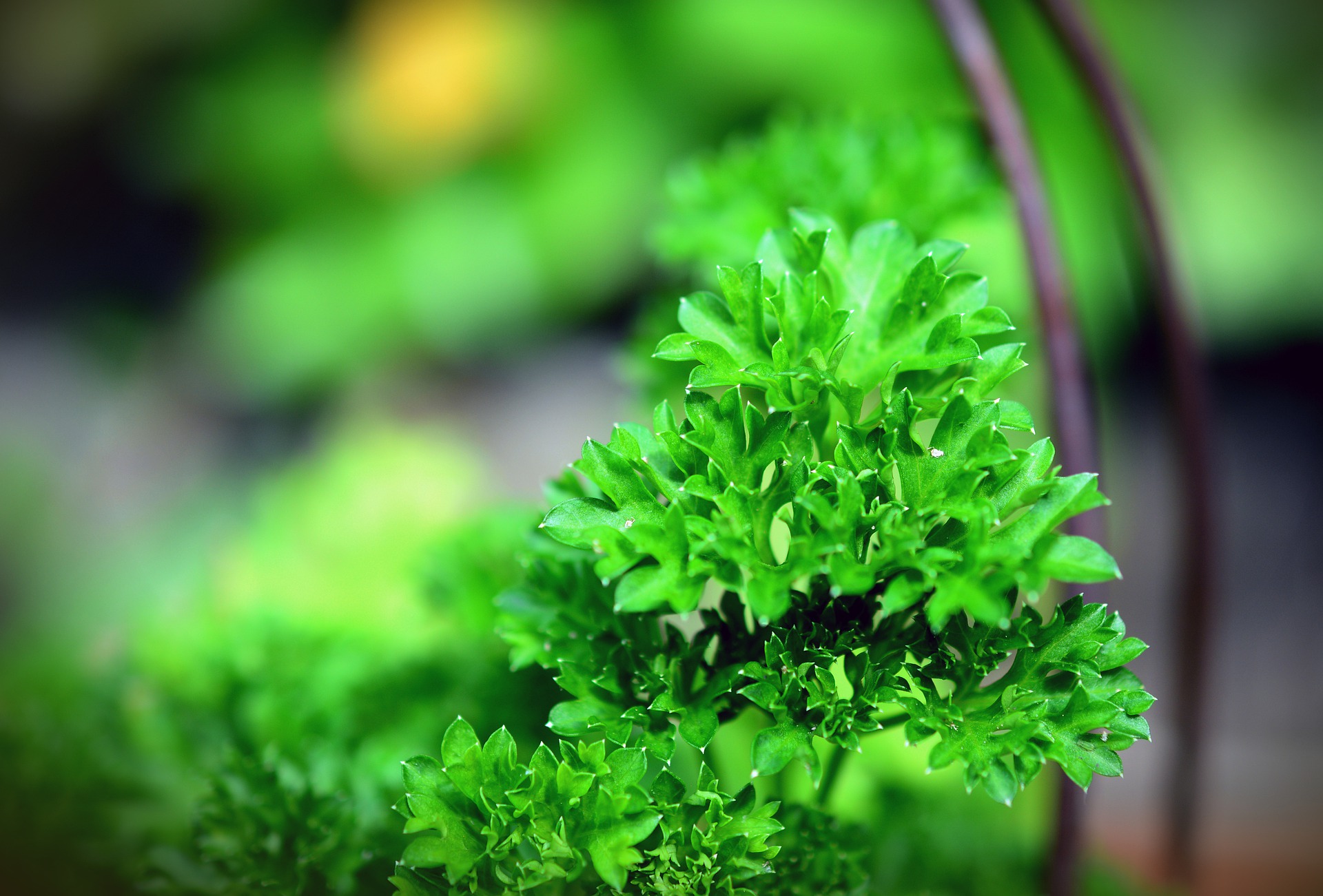There is nothing like simply walking outside to snip fresh aromatic herbs right from the garden to use on demand. Not only will you have high quality delicious herbs, you can save money by growing them yourself! Even if you have a smaller space, growing an herb garden is possible. We’ve compiled some basic information to help you grow and maintain healthy herbs.

Selecting Herbs to Plant
There are a couple different types of herbs available for planting. There are perennial, annual, and biennial herbs. Generally, perennial herbs have hard, woody stems, and annuals have soft stems and delicate leaves.
Perennials
These herbs come back year after year. Some examples of common perennial herbs are sage, lavender, thyme, mint, rosemary, chives, fennel, lovage, and oregano. Perennial herbs are best planted in spring or fall when soil is warm and moist.
Annuals
Annual herbs grow from seed, make seeds, then die off and must be re-planted every year. Some examples of common annual herbs are basil, dill, cilantro, and borage.
Biennials
Biennial herbs take 2 years to go through their biological cycle. The first year, they focus on vegetative and root growth, then go dormant in the winter, and bolt or flower the next spring/summer. Some examples of biennial herbs are parsley, fennel, and common mullien.

Planting Herbs
Recipe for happy herbs:
• Lots of sunshine (at least 6 hours per day)
• Well-draining soil (if you have clay-like soils, you will need to amend).
• Room to grow!
There are many ways to start your herb garden. To keep it simple, we’ll discuss planting via transplants. Herbs are relatively inexpensive to purchase this way, and you can just put them right into the ground (or an appropriately sized pot). While planting, make sure to place a good organic all purpose fertilizer in the planting hole to start out on, sprinkling it right at the plant roots. We recommend our All Purpose Mix 4-6-2, or Bio-Live 5-4-2. Once the plant is established for at least a couple weeks after planting, give it a nitrogen boost to help foliage growth. Liquid All Purpose 4-1-3 works well for this. Make sure the planting hole is wider, but not deeper than the pot and place your plant in the hole. Fill with soil, press, and water in well. For perennials, put in plant supports for your taller plants before it is necessary. You can add compost as a mulch around the top of the plant whether it’s in the ground or in a pot at least once per year to help keep moisture in the soil, as well as the added benefit of additional nutrients and organic matter.

Container Planting:
Many herbs can easily be part of a container garden. However, bear in mind that most herbs do best when planted directly in the ground instead of a pot. Herbs like basil, chives, and parsley can be grown in a windowsill container that gets good sunlight, but will not grow as large or hardy as they would outdoors. Basil does well in a window that has consistent warm temperature. By pinching off leaves before the plant flowers, you cause the plant to grow a bit bushier and the leaves remain tender and sweet. Once basil flowers, it gets tougher and the flavor changes.
Container Pros: There are definite advantages to growing herbs in pots. You can keep them all separate and place them in their ideal locations, move more tender herbs under cover in the winter; annual plants can be added and removed easily without disturbing perennial roots, and for those living in apartment spaces or having little to no yard, potted herbs can make a lovely container garden.
Container Cons: Container herbs require more frequent watering than those planted in larger raised beds or directly in the ground. One of the biggest issues when growing an indoor or outdoor container herb garden is choosing a container that is too small for the plant in question. If you want healthy, lush herbs, make sure to choose a pot with lots of room for the plant to grow. Look up the individual plants spacing and care requirements before planting. A pot that is too small will stunt the herbs, causing stress and the growth and health to diminish, potentially killing the plant.
Herbs that can live in a large pot outdoors are mint, oregano, thyme, rosemary, lavender, verbena, and more. Again, the pot must be quite large to accommodate spreading and root growth for your plant to thrive. Mint is excellent for pots, provided it gets plenty of water. When planted in the ground it will spread and quickly take over the area, so containing it in a pot is the best way to keep it under control.

Seasonal Care
What to do in the spring:
Sow your annual herbs by seed. As seedlings grow, thin and pot the strongest for transplanting in late spring/early summer. Prepare your beds for transplants by cutting back old stems of herbaceous perennials back to the ground. Clean up plant debris, pull weeds, and loosen the top soil. Scratch in any fertilizers or amendments to the soil, water in, and cover with a small layer of compost. Trim hard shrubs like rosemary to control and tame the size, if necessary.
What to do in the summer:
Keep up on watering! Some herbs prefer a drier soil, while others are more thirsty. Higher temperatures can stress out many herbs and also cause them to flower and bolt. Once flowered, leaves become more bitter. To avoid early flowering, simply harvest from your plants regularly, and pinch off flowers when you see them. Shade cloth can also help out by offering protection from the sun during the intense heat of the day. Mulching at the base of plants can also keep roots a bit cooler while retaining soil moisture. Water deeply at the base of the plant, preferably in the morning before evaporation can occur.

Common Problems
Herbs are generally pretty hardy, and the best thing you can do is to keep them healthy by giving them adequate water, nutrients, space, and sunshine. Growing a variety of herbs is a good way to avoid pest problems. The most common pests you’ll see are aphids, slugs, and snails. Check out our garden pest blog for information on identification, prevention, and treatment of pests.
There are some diseases that can effect herbs such as fungal diseases like powdery mildew. Remove the affected leaves and make sure plants are watered adequately, and mulched. Watering at the base of your plants can help to avoid fungal diseases as well.
